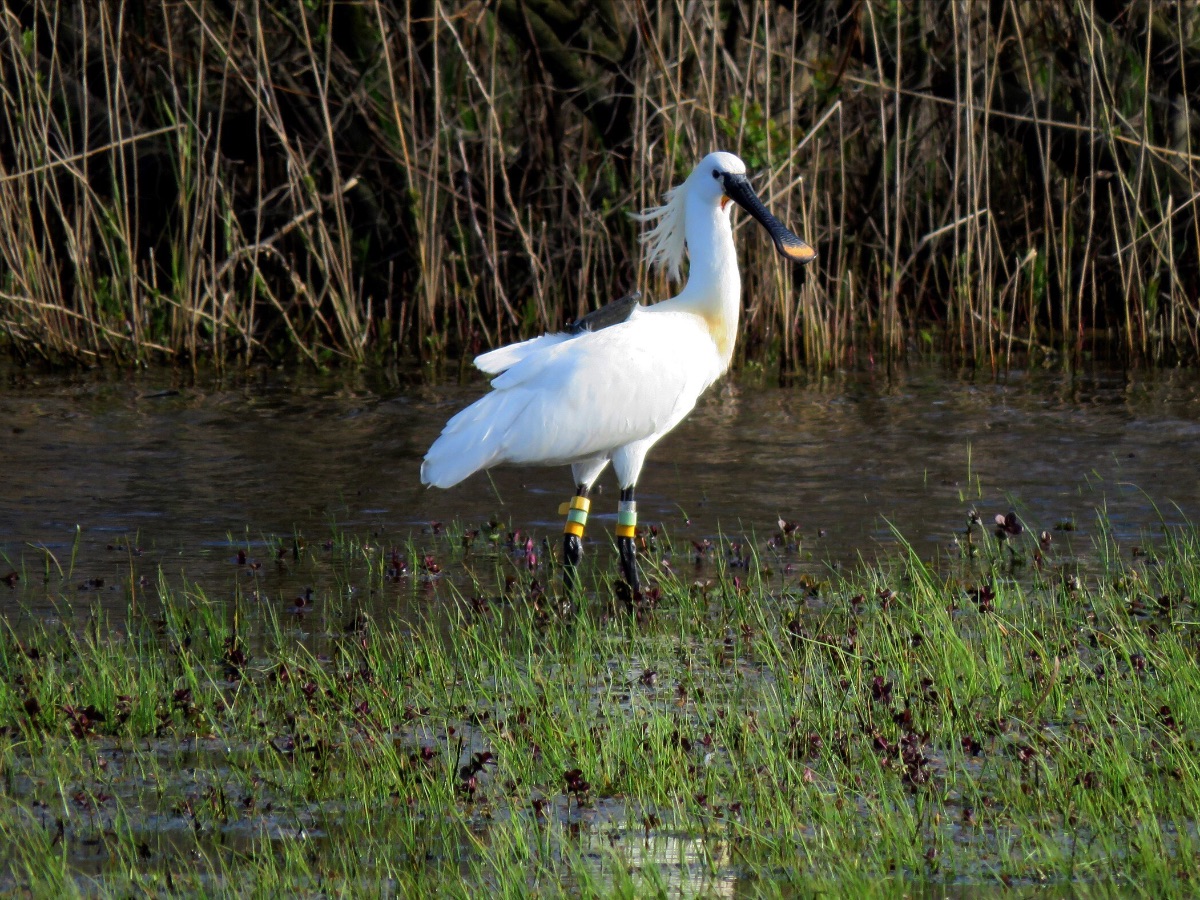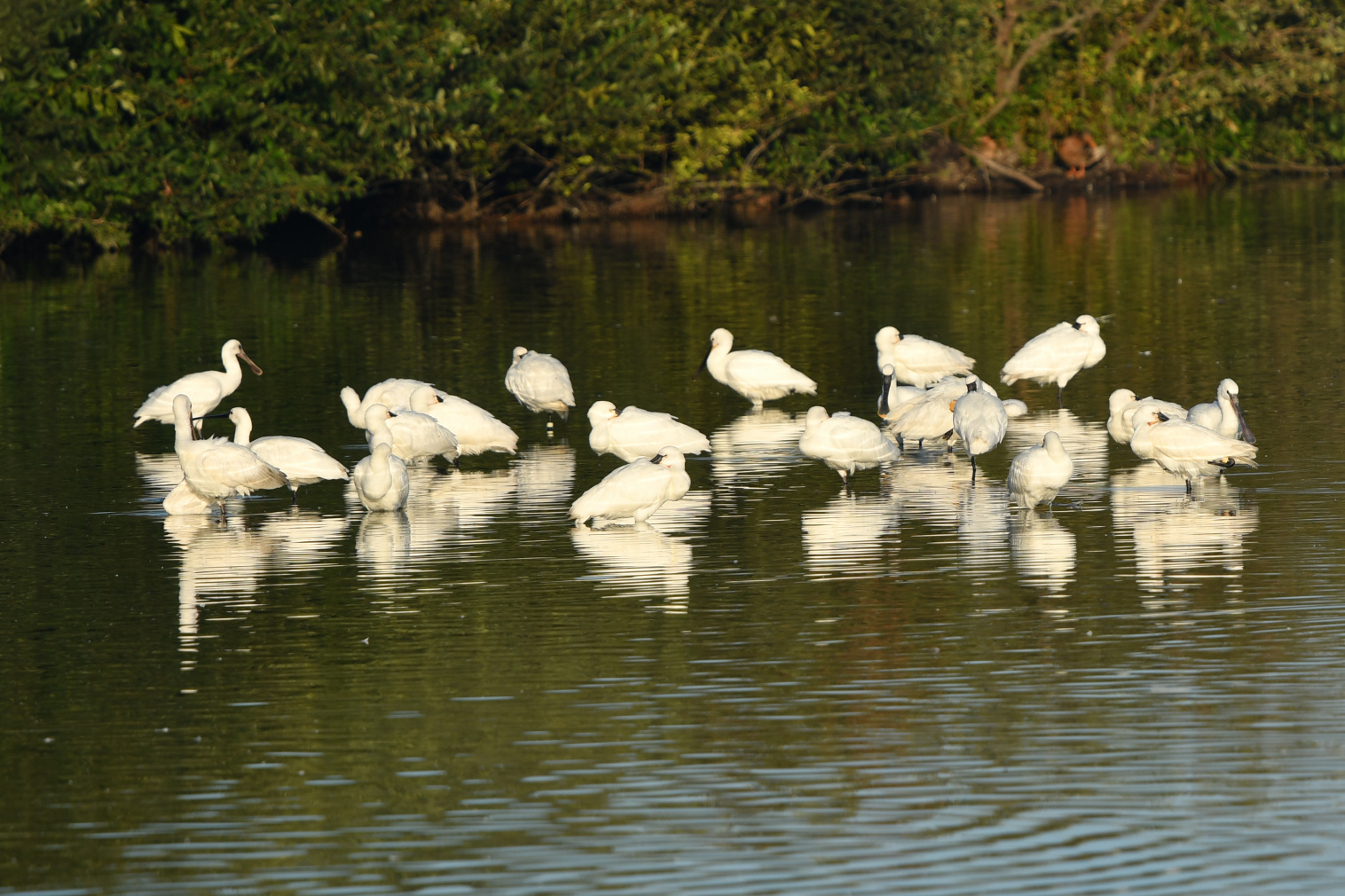Despite concerns among the Staatsbosbeheer nature managers on Vlieland, we still have hope that Sinagote will return.
Omrop Fryslan radio
On May 11th 2023, Omrop Fryslan radio broadcasted: “Nature managers on the WaddenSea island of Vlieland are worried: where is spoonbill Sinagote? The concern is increasing among the Staatsbosbeheer nature managers on Vlieland, because where is Sinagote? There is still no trace of the 17-year-old female spoonbill who has been coming to the island to breed for 5 years. The bird is also the main character in a book about the life of spoonbills in Europe, which was written by, among others, nature manager Carl Zuhorn. Spoonbill Sinagote is named after Sina, a village in Brittany in France where the bird can always be found in winter. Sinagote was fitted with a transmitter in 2013. Scientists could read remotely where the bird had been. This is how her pattern was established: in the winter she was in France and in the spring she flew to the North, to the Netherlands, along the Afsluitdijk to the Lauwersmeer and then to the island of Vlieland to breed. She was always a woman of the clock.

Sinagote in earlier days
Nature manager Carl Zuhorn about Spoonbill Sinagote: “Normally, the spoonbill arrives on Vlieland between 1 and 15 April, but she hasn’t been seen yet. She has not yet been observed in the Lauwersmeer, where she always goes first and hangs around with some of the same species,” says Carl Zuhorn. “After a few days, she moves a bit more west and ends up on the island of Vlieland. Unfortunately not so far.” Sinagote’s transmitter broke last year and she can no longer be followed. Every day Zuhorn and his colleagues search across the WaddenSea to see if they see the bird among the other foraging spoonbills. “The colonies are well occupied, that’s not the problem. It remains to be seen what will happen, it will be exciting. She was always a woman of the clock.”
Doomsday scenario
Sinagote was one of the first spoonbills with a new type of transmitter that provided a lot of information about the migrations. Zuhorn is not yet thinking of a doomsday scenario. “Spoonbills sometimes have the habit of skipping a year or moving to another colony somewhere. Perhaps she is on the Boschplaat (a saltmarsh on the next Wadden Sea island Terschelling, ed.) where no one has looked yet, or on the island of Ameland. Here she is at least not yet found,” he says, disappointed. According to Zuhorn, there are dangers on the route of the spoonbill. “By following her transmitter-routes, we come across places where power lines hang and wind farms have been built. Nowadays, the lake IJsselmeer also has a wind farm. She has been flying over it at 160 meters in recent years and a windmill is about 115 meters. If the wind is in the wrong direction , she can be sucked down like that.” It cannot be due to Sinagote’s age, because there are spoonbills of 29 years old, Zuhorn knows. He is hopeful that he will see the bird again soon. “In August, September she is always fattening up on the east side of the Lauwersmeer for the migration to Brittany. It is still possible that she will suddenly reappear.
July 1st 2023 - follow-up
Sinagote has still not been observed, not on Vlieland in the colony, not on the mudflats south of Vlieland, nowhere else on the Wadden Sea Islands and not in France either. We still have a glimmer of hope that she is alive. This year Spoonbill Lauwers did return to the colony on the Wadden Sea island Schiermonnikoog. He also has a transmitter, since 2016. Since then he came to Schiermonnikoog every year to breed. Except in 2022 when he didn’t come. The text messages the transmitter sent every day showed that he had stayed in the Marismas del Odiel near Huelva in southern Spain. That is the area where he has spent the winter since his birth in 2006. In 2022 he decided not to breed and just spent his summer in Odiel. In March of 2023 he came to breed on Schiermonnikoog again, and with success. He raised a chick. So who knows, Sinagote may have skipped a breeding season and she is in a place where there are just no observers. That could be the saltpans of Guerande, for example. She wintered there more and more in recent years, but almost never an observer comes to those saltpans. So who knows, she might turn up again in 2024!

Spoonbills resting in the shallow water of the Westerplas, Schiermonnikoog - Photo: De Witte Haas

